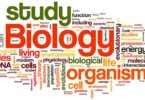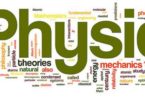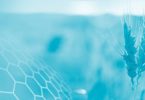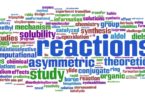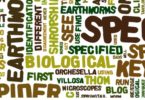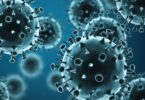Respiratory System Questions and answers:
The diabetic patient shows
(a) High respiratory quotient
(b) Low respiratory quotient
(c) Zero respiratory quotient
(d) None of these
Breathing rate is lowered during eating because
(a) Our lungs do not get enough supply of blood
(b) Swallowing and breathing cannot go together at the same time
(c) Lungs are compressed as stomach enlarges
(d) More energy is required during eating
The oxygen toxicity is related with
(a) Blood poisoning
(b) Collapse of alveolar walls
(c) Failure of ventilation of lungs
(d) Both (a) and (b)
Following process is chemically similar to ‘sugar fermentation’
(a) Anaerobic respiration
(b) Aerobic respiration
(c) Pulmonary respiration
(d) Cutaneous respiration
The maximum possible volume of air, which can be Inhaled by humans, is called as
(a) Inspirations capacity
(b) Vital lung capacity
(c) Residual volume
(d) Total lung capacity
Related: Human Health and Disease online test
The state during which the respiratory centre is inhibited is termed as
(a) Asphyxia
(b) Suffocation
(c) Anoxia
(d) Chocking
The respiration rate is lowest while
(a) Playing tennis
(b) Runing
(c) Snoring
(d) Eating food
The covering of lungs is called as
(a) Pericardium
(b) Pleural membrane
(c) Perichondrium
(d) Peritoneum
The covering of lungs is called as
(a) Pericardium
(b) Pleural membrane
(c) J Perichondrium
(d) J Peritoneum
Rate of breating is controlled by
(a) The amount of freely available oxygen
(b) Carbon dioxide
(c) Muscular function of the body
(d) Stress
Related: Quiz on Glycolysis and Krebs cycle
The form of energy used in respiration is
(a) Chemical energy
(b) Electrical energy
(c) Mechanical energy
(d) Radiant energy
In an accident, a man dies immediately although their was no injury to brain, kidney, stomach and heart, The probable cause of death may be
(a) Coagulation of RBC
(b) Digestion stopped
(c) Diaphragm got punctured
(d) Larynx got punctured
The air which is taken in or given out during a single breath is known as
(a) Residual air
(b) Vital air
(c) Tidal air
(d) All of these
The narrowest and most numerous tubes of lungs are termed as
(a) Bronchus
(b) Alveoli
(c) Bronchioles
(d) Hilum
What is the end product of glycolysis?
(a) Pyruvic acid
(b) Acetyl CoA
(c) Lactic acid
(d) Citric acid
Related: Endocrine system multiple choice questions answers
Acquiring an oxygen debt is evidence that
(a) O2 cannot be stored in tissue
(b) Aerobic respiration is more complex than glycolysis
(c) Lactic acid can be converted into glycogen
(d) Anaerobic process are slower than aerobic processes
To the metabolic rate of body total pulmonary ventilation is
(a) Directly proportional
(b) Inversely proportional
(c) Not related
(d) Variable
Where does cellular respiration take place
(a) Lysosomes
(b) Ribosomes
(c) Mitochondria
(d) Endoplasmic reticulum
A normal human respires in a minute
(a) 10-15 times
(b) 14-18 times
(c) 35 – 45 times
(d) 45 – 55 times
Which one of the following has the smallest diameter?
(a) Right primary bronchus
(b) Left primary bronchus
(c) Trachea
(d) Respiratory bronchiole
Related: Trigonometry practice questions
Respiratory pigment in cockroach is
(a) Haemozoin
(b) Haemocyanin
(c) Haemoglobin
(d) Absent
Number of alveoli in human lung is about
(a) One million
(b) More than two millions
(c) More than five millions
(d) More than seven millions
Which of the following is a respiratory organ of scorpion
(a) Gill
(b) Lung
(c) Ctenidia
(d) Book lung
During the deficiency of oxygen in tissues of human beings, pyruvic acid is converted into lactic acid in:
(a) cytoplasm
(b) chloroplast
(c) mitochondria
(d) golgi body
Residual air in rabbit is found in
(a) Nostrils
(b) Trachea
(c) Bronchus
(d) Alveoli
Related: Branches of Biology with meaning
There is a membrane covering the lungs, called
(a) Peritonium
(b) Pleura
(c) Pericardium
(d) Duramater
Blood does not transport oxygen in
(a) Cockroach
(b) Earthworm
(c) Frog’s tadpole
(d) Mammalian foetus
Lack of oxygen in muscles often leads to cramps in the legs of sprinters. This is due to conversation of pyruvate to:
(a) ethanol
(b) carbon dioxide
(c) acetic acid
(d) lactic acid
What structures are responsible for breathing process
(a) The trachea and alveoli
(b) Larynx and bronchi
(c) Ribs and intercostal muscles
(d) Intercostal muscles and diaphragm
The structure which prevents the entry of food into respiratory tract is
(a) Pharynx
(b) Larynx
(c) Glottis
(d) Epiglottis
Related: Photoelectric effect questions
Which structure in mammals does not help in respiration?
(a) Ribs
(b) Abdominal muscles
(c) Diaphragm
(d) Larynx
The blood coming out of lungs than entering into lungs is richer in
(a) Carbon dioxide
(b) Oxygen
(c) (a) and (b) both
(d) None of these
When air is blown from mouth into a test-tube containing lime water, the lime water turns milky due to the presence of:
(a) oxygen
(b) carbon dioxide
(c) nitrogen
(d) water vapour
The vital capacity of the lung signifies the volume of air
(a) Breathed in during normal inspiration
(b) Breathed out with forcible expiration
(c) Breathed in with forcible inspiration
(d) With deep inspiration and forcible expiration
The largest quantity of air that can be expired after a maximum inspiratory effort is
(a) Residual volume
(b) Tidal volume
(c) Vital capacity of lung
(d) Lung volume
Related: multiple choice questions for Photosynthesis
If the thoracic wall but not the lungs in man are punctured
(a) The lungs get inflated
(b) The breathing rate will decrease
(c) The breathing rate will increase
(d) He will die as the lungs are collapsed
A pyrophosphate cleavage takes place when
(a) ATP is converted into AMP
(b) ATP is converted into ADP
(c) ADP is converted into AMP
(d) AMP is converted into ATP
Internal respiration may be defined as:
(a) breathing in and releasing of oxygen in the tissue
(b) the oxidation of food substances to release energy
(c) the building up (synthesis) of complex substances
(d) getting rid of carbon dioxide that would accumulate in the tissues
Oxygen is transported to every cell of the body through
(a) RBC
(b) WBC
(c) RBC and WBC
(d) RBC and hormones
In respiration the energy is produced during the process of
(a) Glycolysis
(b) Krebs cycle
(c) Glycolysis and Kreb’s cycle
(d) Ornithine cycle
Related: sample papers for Biotechnology
Respiration is the physiological process in which
(a) Breathing occurs
(b) Breathing and external respiration occur
(c) Breathing, external respiration and cellular respiration occur
(d) Only inspiration occurs
In mammals how much CO2 is transported as bicarbonates of sodium and potassium in the blood
(a) 5–10 %
(b) 10–90 %
(c) 70–72 %
(d) 90–95 %
Which of the following is known as the energy currency of cells in biology?
(a) DTP
(b) PDP
(c) ATP
(d) DDT
Which animal has unpaired lungs
(a) Monkey
(b) Whale
(c) Some frogs
(d) Some snakes
Mammalian lungs have enormous number of minute alveoli (air sacs). It is to allow
(a) More space for increasing the volume of inspired air
(b) More surface area for diffusion of gases
(c) More spongy texture for keeping lungs in proper shape
(d) More nerve supply to keep organs active when working
Related: electrochemistry multiple choice quiz
Which of the following increases in muscle cells when they are lacking in oxygen?
(a) carbon dioxide
(b) lactose
(c) lactic acid
(d) uric acid
The autotropic mode on nutrition requires:
(a) carbon dioxide and water
(b) chlorophyll
(c) sunlight
(d) all of these

